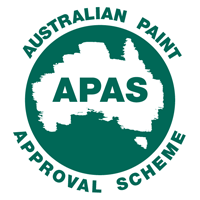My paint has bubbles! What are they and why did it happen? This will always be one of the first questions you ask when you notice bubbles appearing in your once smoothly painted surface.
Paint bubbles or blisters can occur long after the paint has been applied or in some instances, the very next day. Steps can be taken to avoid this from happening before the problem occurs.
Paint blisters or bubbles occur when the paint film lifts off the underlying surface so let’s take a look at the usual causes:
- Moisture under the paint film
- Poor preparation of the substrate
- Heat causing moisture to expand under the surface and force its way out
- Surface contamination
- Incompatible coatings such as applying a solvent based polyurethane over an enamel coating
How are blisters and bubbles prevented?
- Avoid working in direct sunlight or in extremely hot areas. Exterior heat causes the outermost surface to dry at a very fast rate. Blisters result from this layer drying before those below it.
- Ensure the substrate is completely dry and if painting a retaining wall or pool the substrate is completely sealed to prevent moisture ingress by the presence of air gaps.
- Avoid painting in hot or humid conditions.
- Ensure the substrate is properly prepared and is clean and dry.
- Allow paint to dry completely before exposing to moisture.
To repair blistered areas the following procedures can be used:
- Remove the blisters by scraping, sanding, or high-pressure water blasting.
- Suitably prepare the surface using the correct preparation methods and products.
- Ensure the correct paint is used when painting over an existing coating.
- Remove any flaky or loose material from the substrate.
But wait, there are different kinds of bubbles!
Solvent boil is like micro bubbles. This is caused by the surface of the film closing over and solvent trapped in the film forcing its way out. Normally this is caused by heat, either atmospheric or from baking. It can be eliminated by use of a slower solvent thus keeping the surface open for longer and allowing the solvent in the film to escape easily.





